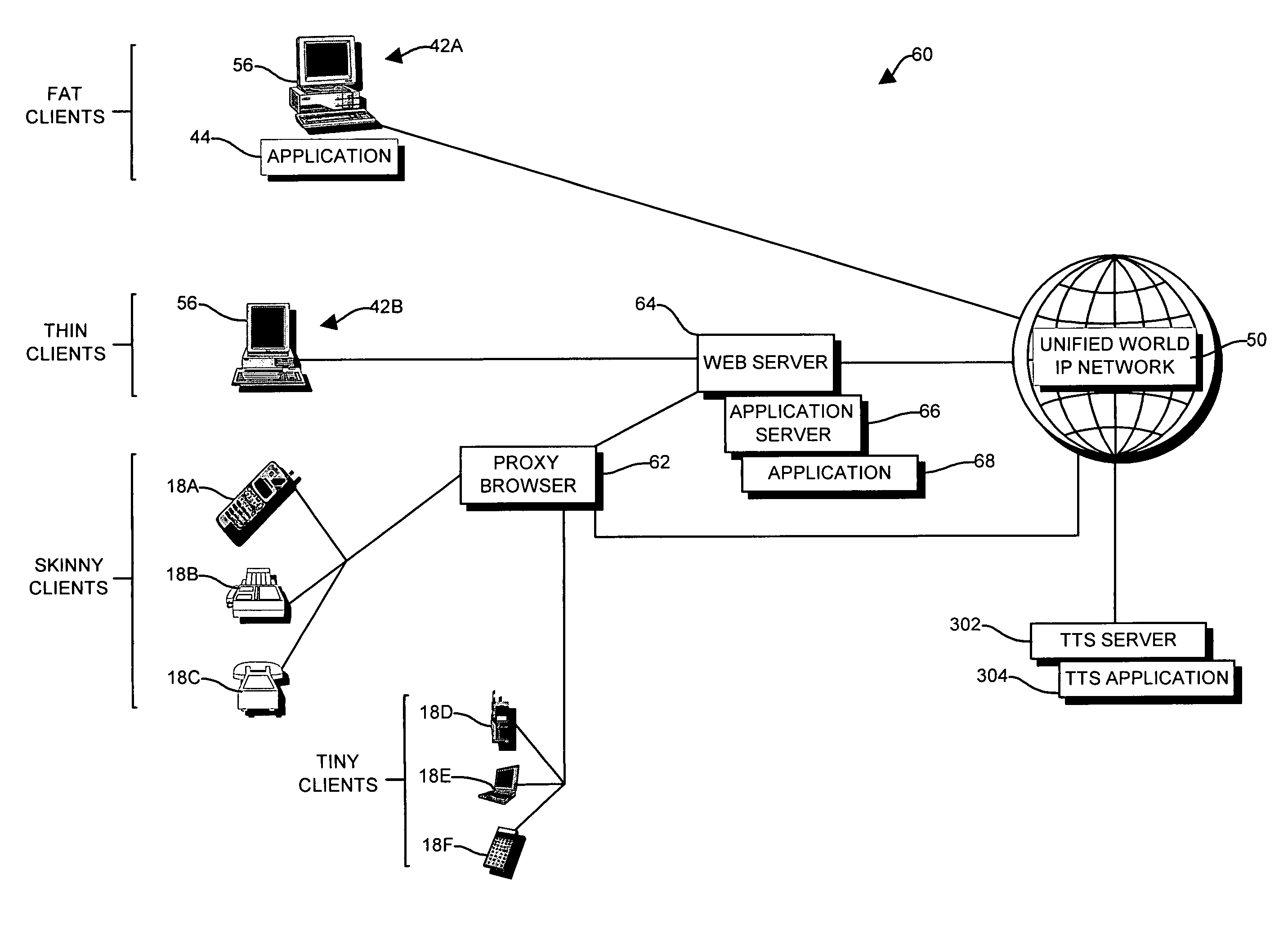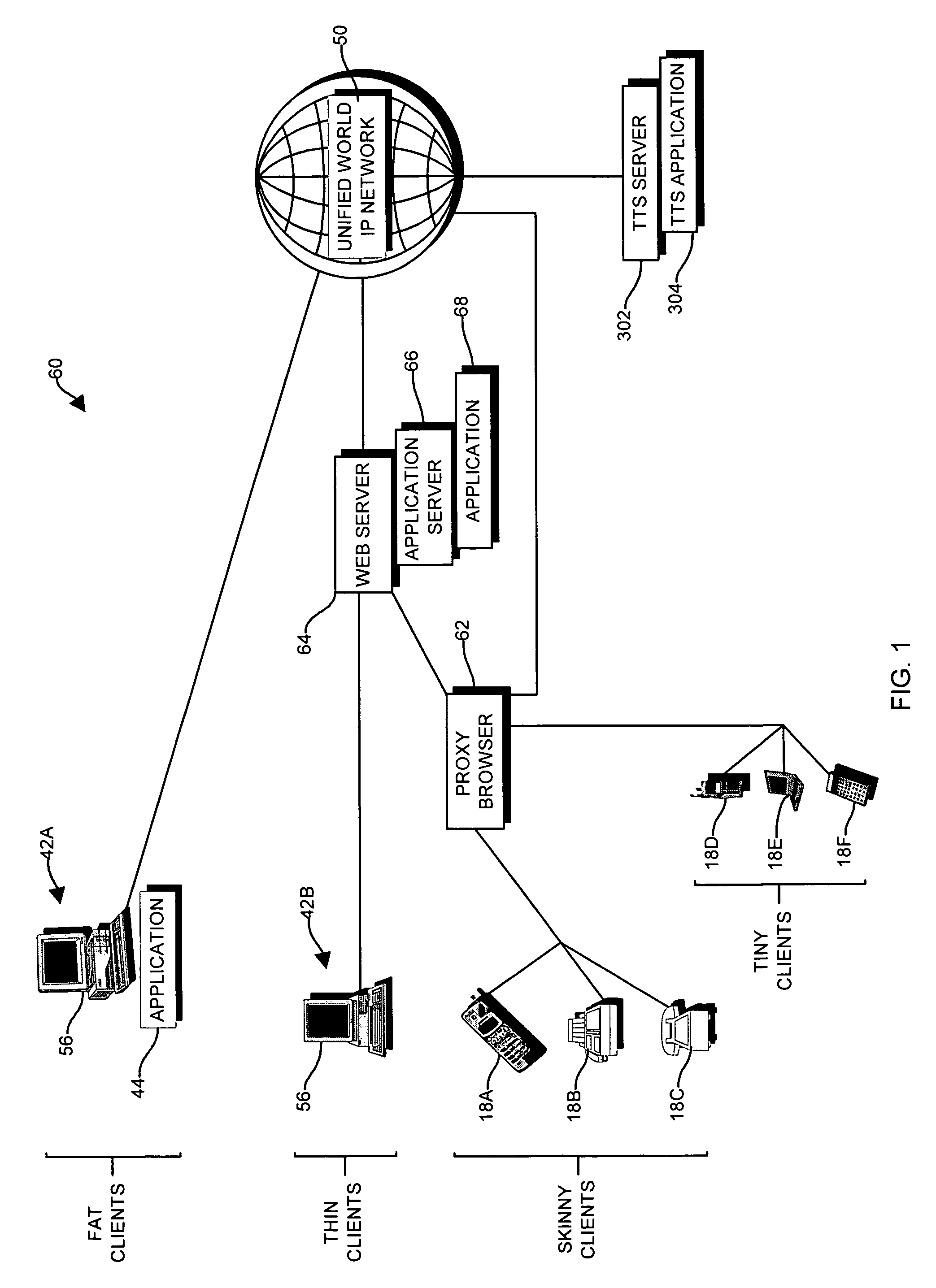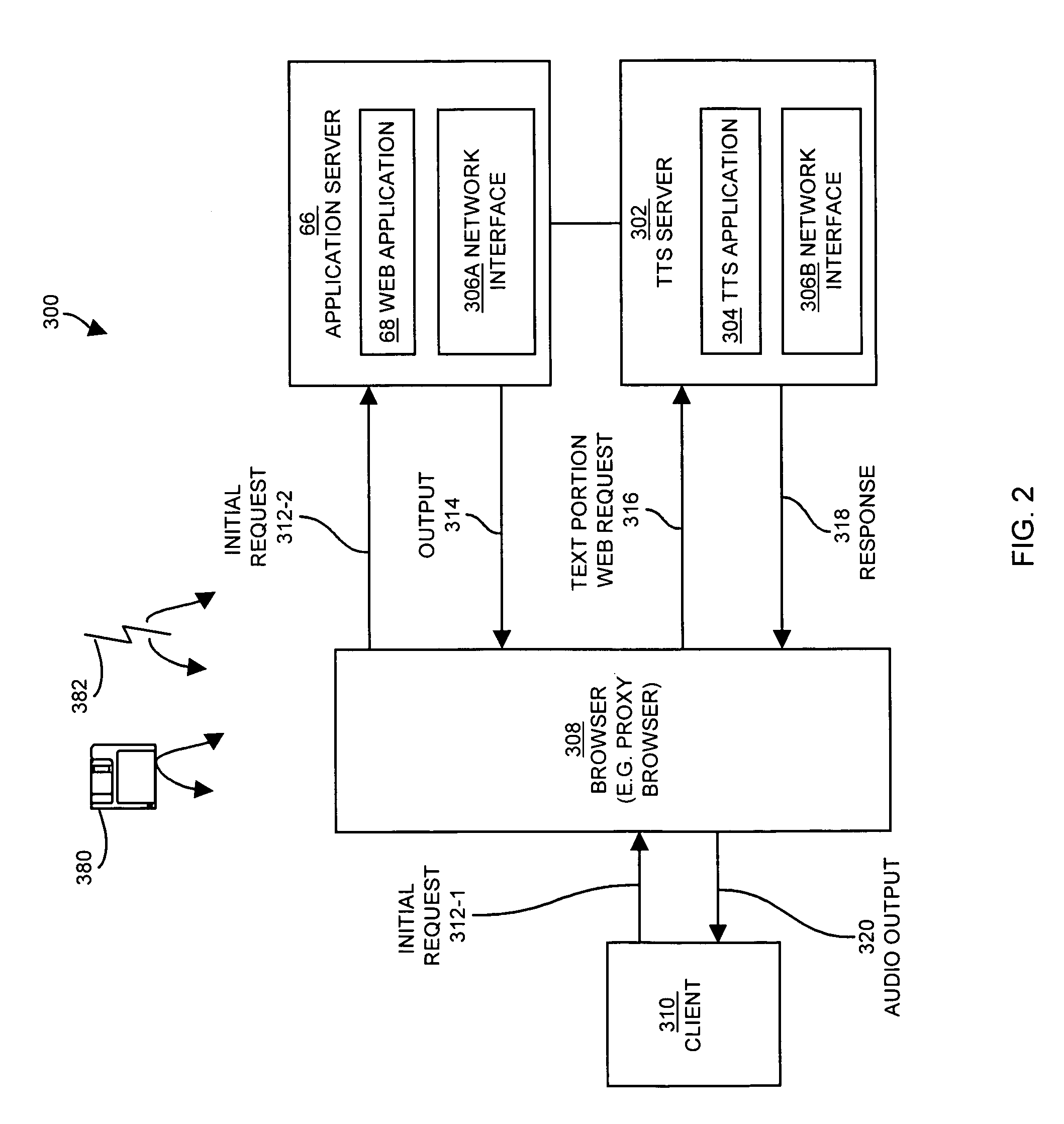[0011]In one embodiment, the invention is directed to a method for providing text-to-speech conversion of a body of text. The method includes generating text portions from the body of text in response to receiving an initial web request to convert the body of text to speech, and providing an output in response to generating the text portions. The output includes a sequence of resource identifiers suitable for use in the text-to-speech conversion of the text portions. Each of the resource identifiers includes a corresponding one of the text portions and an identity of a resource capable of performing the text-to-speech conversion. The method further includes receiving a text portion web request that requests the conversion of one or more text portions to an audio format. The text portion web request includes the text portion and one of the resource identifiers in response to providing the output. The method additionally includes providing one or more media files suitable for audio output in response to receiving the text portion web request. Thus, for example, the method provides output media files to a
client device to play to a user, so that the user hears an audio version of the body of text based on the text portions without the delay caused in conventional systems by waiting for the TTS conversion of one relatively large, undivided body of text to one media file.
[0014]In another embodiment, the resource identifiers are URL's having text portions that include character strings suitable for conversion to an audio format. The identity of the resource is an HTTP address of the resource. In a further embodiment, the
executable resource provides the resource identifiers in a prescribed sequence based on respective positions of the text portions in the body of text. For example, the executable resource (e.g. a
web application) divides the body of text into smaller portions that are more readily converted to speech and identifies a TTS resource (e.g. a TTS application) that is capable of performing the TTS conversion of the text portions in the prescribed sequence. Thus, after the TTS conversion, a listener hears a speech version of the body of text as though converted in one step, and the conversion occurs more quickly than would occur in a conventional system that converts the body of text as a whole.
[0015]In one embodiment, the invention is directed to a method in a
server for providing text-to-audio
resource information. The method includes generating text portions from a body of text, formatting resource identifiers suitable for use in text-to-audio conversion of the text portions, and providing an output that includes the resource identifiers in response to formatting the resource identifiers. Each of the resource identifiers includes a corresponding one of the text portions and an identity of a resource capable of performing the text-to-audio conversion. In another embodiment, the method includes receiving an initial request for a text-to-audio conversion of the body of text, and generating the text portions in response to receiving the initial request. Thus, the body of text is divided into text portions in response to an initial request that can be converted to audio more readily than the conversion of the body of text as a whole, as would be done in a conventional system.
[0019]In one embodiment, the invention is directed to a text-to-audio
server for providing text-to-audio conversion of a body of text. The text-to-audio server includes a
network interface and an executable resource. The executable resource receives, through the
network interface, a text portion web request that requests a conversion to an audio format of one or more text portions generated from a body of text and generates a response suitable for audio output in response to receiving the text portion web request. The text portion web request includes one or more text portions and the identity of a resource capable of text-to-audio conversion. In another embodiment, the text portion web request includes a URL that includes character strings suitable for conversion to an audio format, and the identity of the resource comprises an HTTP address of the resource. In a further embodiment, the response includes media files suitable for the audio output. Thus, a requester (e.g. client device or intermediary computer) of the TTS conversion of a body of text can make and fulfill requests for a text portion to be converted to a media file in a relatively quick manner for each text portion compared to the time needed to convert the
whole body of text to speech in one step, and make additional requests for each text portion until the conversion of the body of text is complete. As the conversion occurs for each media file, then a user (e.g. of a client device) hears the media file for each text portion as soon as each text portion has been converted.
[0025]In another embodiment, the invention is directed to a
resource identifier suitable for use in requesting text-to-audio conversion over a network. The
resource identifier includes a text portion generated from a body of text and an identity of a resource capable of converting the text portion to an audio format. In a further embodiment of the
resource identifier, the text portion includes character strings suitable for conversion to the audio format. In an additional embodiment of the resource identifier, the identity of the resource is the HTTP address of the resource. Thus, the resource identifier provides a relatively compact way of requesting the conversion of a piece of text (i.e. a text portion) using a
low overhead format for the request, such as an HTTP request.
 Login to View More
Login to View More  Login to View More
Login to View More 


